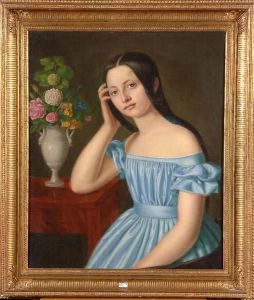Peter Carl Bredt Paintings
Peter Carl Bredt was a German artist born on March 19, 1857, in Elberfeld (now part of Wuppertal), Germany. He was known for his detailed and evocative genre scenes, landscapes, and portraits, reflecting a keen observation of his environment and the people within it. Bredt's work is often characterized by its meticulous attention to detail, vibrant colors, and the ability to capture the mood and atmosphere of a moment. His artistic journey began in the environment of the Düsseldorf School, a group that had a significant influence on his development as an artist. The school was renowned for its rigorous training and emphasis on drawing from life, which is evident in the realism and precision of Bredt's work.
Throughout his career, Bredt traveled extensively, which greatly influenced his artistic output. He spent considerable time in Italy, particularly in Rome and Venice, where he was inspired by the light, landscape, and the rich cultural heritage. These experiences are reflected in his works through the incorporation of Italian themes and subjects. Bredt was also influenced by his travels in the Middle East, where he developed an interest in Orientalist themes, joining the ranks of European artists fascinated by the exoticism and perceived mystique of Eastern cultures. His paintings from this period often feature intricate architectural details, vibrant markets, and scenes of daily life, rendered with a romanticized vision that was typical of Orientalist art.
Despite the popularity of his work during his lifetime, Peter Carl Bredt's legacy has been somewhat overshadowed by his contemporaries. However, his contributions to German art in the late 19th and early 20th centuries remain noteworthy. He was a prolific artist, and his paintings are held in various collections and museums, appreciated for their historical value and artistic merit. Bredt passed away on December 31, 1932, in Düsseldorf, leaving behind a body of work that continues to be studied and admired for its depiction of a bygone era with authenticity and artistic skill. His paintings serve as a window into the diverse influences and experiences that shaped his artistic vision, from the academic traditions of the Düsseldorf School to the inspiring landscapes and cultures he encountered throughout his travels.
